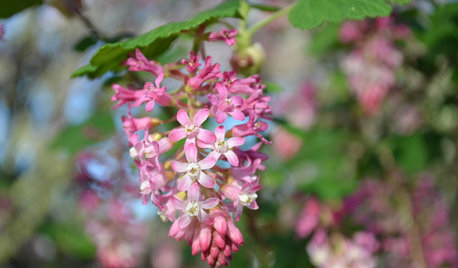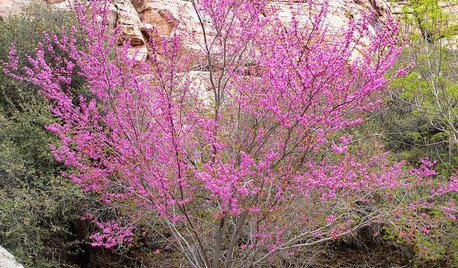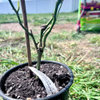Rethinking Feeding Alfalfa to Roses in Southern California
Tessiess, SoCal Inland, 9b, 1272' elev
12 years ago
Featured Answer
Sort by:Oldest
Comments (13)
roseseek
12 years agolast modified: 9 years agoRelated Discussions
Help using feed store alfalfa pellets roses
Comments (13)Look at 100% alfalfa cubes, too. They work the same as pellets and are likely to have fewer additives. They are dried chopped alfalfa compressed into 2 inch cubes. As far as I can tell, California cubes don't have additives, but you should confirm with the seller. If you garden in a civilized suburban setting, you can toss them out to the dripline and water them in. If you garden where there are vermin or want to avoid the hand-watering, put them in a garbage can, add water, and dole the mash out to your roses. You don't need to overdo it. I add at roughly 1 cup of alfalfa to a 3 foot diameter dripline. Adjust to the size of the dripline of the rose. The primary additive is a hormone that aids in root growth. In Zone 9 California, early fall (right now) is a time of tremendous root growth, as is late winter to early spring. I'd do it soon. I'm sure you do no harm by adding more or at other times, but IMO it's a labor intensive exercise, so I want to get my money's worth. Once a year is fine. I find it really beneficial in pots and can't manage it any more with the planted roses because it is to labor intensive with a lot of big roses. Follow up to make sure it doesn't form a crust on the surface. You might need to break it up. I don't know what you mulch with, but I put it on top of the mulch I use....See MoreFall bloom size in Southern California???
Comments (1)FWIW, we have always gotten our best blooms in the Fall flush. Around mid-to-late October. And just at present, the Teas are blooming around Plumerias, which is sort of neat. Jeri...See MoreTomatoes in Southern California: Feb-2014
Comments (24)Have you any familiarity with the Kheulavator? Agri Supply carries them. It takes some doing to get a variety of widths on raised beds and so I really can't recommend one. However, I've dealt with one for about 10 years now. I have a Kubota L4400 with a Lands Pride rototiller. After I rototill the garden I use the k'vator to hill the row/bed. I then rake it by hand to level it and establish the width and height. Usually my beds are about 10-14" above grade. The width can be anywheres from 8" to 36" wide. Wider than that isn't really practical and it's actually easier to just use the rototiller. I recently decided to design and build a bed shaper to fit on the tiller. I typically will ask the community at 'tractorbynet.com' to assist me with the design, under the appropriate forum(s). You can't cross-list so I try to ask specific design questions rather than one general question. I've been doing raised beds with a drip irrigation line arrangement for a long time. If you'd like to share info on them we could start another thread here or share on tractorbynet. I need to start taking pictures of the garden and progress anyway. I'm not the best a) housecleaner or b) photographer. I get a little shy of taking pictures of my garden as there is always some level of chaos i.e., tools scattered around along with drip fittings, pvc, implements, dying vegetation etc. Inhibits me from shooting pics. However I am sort of computer literate and can handle the upload side of stuff usually. This year I decided to put into use my jang jp3 seeder. I just did leeks and bulb/bunching onions. CAn't comment on singulation or skips as they're just starting to germinate after 2 weeks. I have a good assortment of rollers and look to use the seeder this season in order to get familiar with it. I have had it sitting unused for the last 10 years. The reason is the raised beds aren't really accepting of a multi row hand seeder. It also was binding on the rollers to the extent that you could not push it down the row cause the driving wheels would stick! Pretty lousy for a 1k USD machine. This year I hand sanded the rollers and their receivers until enough movement was created to allow the seeder's use. Johnny's seeds has been goofing around with them. They have a good cross referenced EXCEL sheet with their suggestions for type of seed/roller correspondence. Makes roller selection better than guessing although the top of the seed hopper has indentations for seed/roller identification. If setting up a thread for discussion sounds amenable to ya let me know ok? Is there a way to PM on garden web? psient Psient...See MoreRoses, and Southern California's "Devil Wind" . . .
Comments (23)Thank you Ingrid. The big West Mims Fire/Okeefenokee Swamp and Wildlife Refuge fire has grown by leaps and bounds. We were getting ash from that one yesterday and its 42 miles away. Its pretty much all woods in this part of the state. Still pretty far from us but wow ashes floating that far.. Yesterday, a whole leaf that was white ash landed on my hand. A perfectly formed leaf but ash..ghostlike. I was gonna take a picture of it but it disintegrated when I moved my hand lol. Whenever the wind is just right we get smoke and ash. I feel really sorry for all the wildlife. It is an important habitat for migrating birds. Some people closer to the fire are being evacuated. They were just letting it burn naturally (like the Yellowstone Fires in 1988) but now its 3 times the size of Miami and getting out of control and encroaching on communities where people live so they are actively fighting it now. They say its too big to put out now and may burn till November! Crazy!...See Morejerijen
12 years agolast modified: 9 years agostrawchicago z5
12 years agolast modified: 9 years agoTessiess, SoCal Inland, 9b, 1272' elev
12 years agolast modified: 9 years agojerijen
12 years agolast modified: 9 years agoroseseek
12 years agolast modified: 9 years agomichaelg
12 years agolast modified: 9 years agostrawchicago z5
12 years agolast modified: 9 years agoroseseek
12 years agolast modified: 9 years agoGary M
12 years agolast modified: 9 years agomichaelg
12 years agolast modified: 9 years agohoovb zone 9 sunset 23
12 years agolast modified: 9 years ago
Related Stories

INSPIRING GARDENSNative Plants Bring 10 Southern California Front-Yard Gardens to Life
Rare plants, rain gardens and wildlife habitats are just a few of the features showcased on the 2016 Theodore Payne Native Plant Garden Tour
Full Story
GARDENING GUIDESGreat Design Plant: Feed Wildlife With Flowering Currant
Blossoms and berries make this plant irresistible to birds, bees and other critters — and a treat for the eyes too
Full Story
GARDENING GUIDES15 Native Flowers That Feed Native Bees
These perennials offer superfood to hundreds of bees and are gorgeous in their own right
Full Story
GARDENING FOR BIRDSFeed the Birds: 6 Plants for Abundant Winter Berries
Be kind to your fair feathered friends during lean food times by planting a shrub or tree loaded with nutritious snacks
Full Story
GARDENING GUIDESCalifornia Gardener: What to Do in July
Active green thumb or not, top priorities for peak fruit and veggie season: watering, feeding, keeping up with growth
Full Story
GARDENING GUIDESLearn the Secret to Bigger and Better Roses
Grow beautiful roses using both ordinary and unusual soil amendments
Full Story
WINTER GARDENINGPruning Secrets for Exquisite Roses
Encourage gorgeous blooms year after year with this time-tested advice on how to prune your rosebush in winter for health and shape
Full Story
GARDENING GUIDESCalifornia Gardener's June Checklist
Update your hydrangeas, catch up on tomatoes and more ways to enjoy your California garden in June
Full Story
GARDENING GUIDES10 Top Native Plants for Northern California Gardens
Enjoy a fuss-free, water-wise garden by growing plants naturally in tune with the climate and wildlife of Northern California
Full Story
LANDSCAPE DESIGNCalifornia Says Goodbye to the Sprawling Ornamental Lawn
New state rules will effectively limit turfgrass to 25 percent of the landscape in most new and renovated yards
Full Story




jerijen